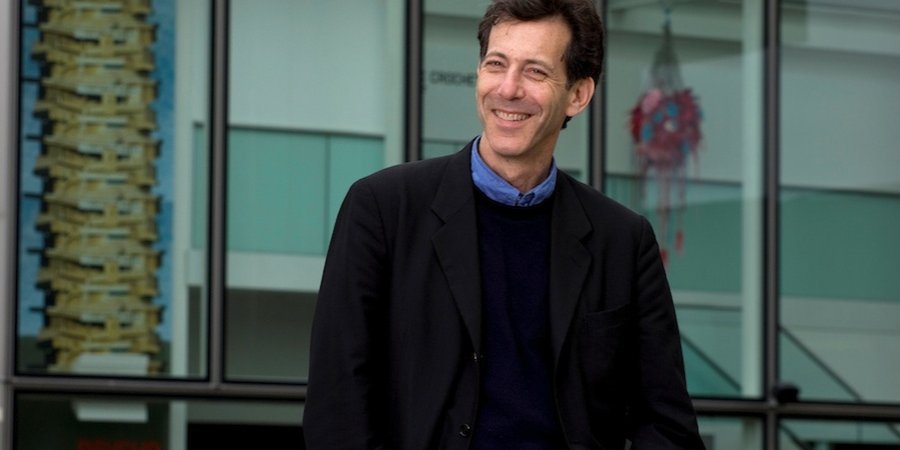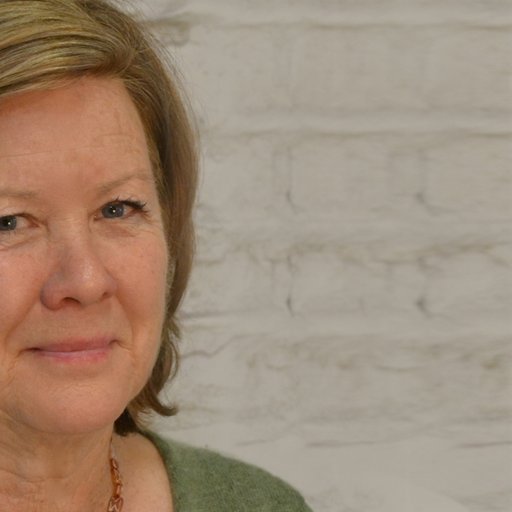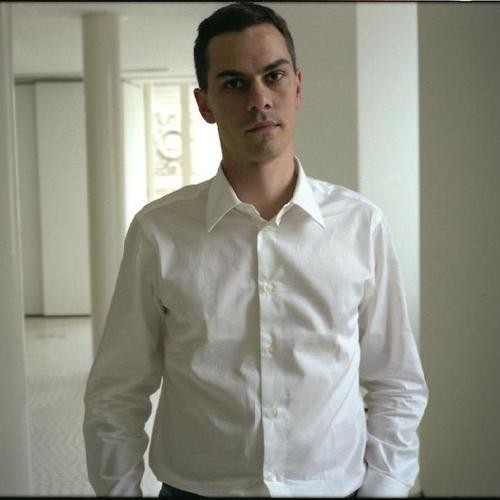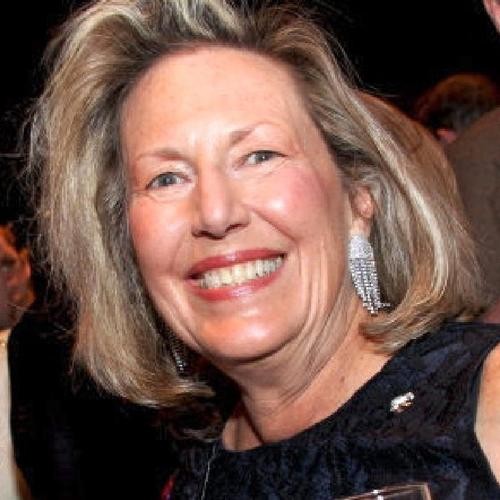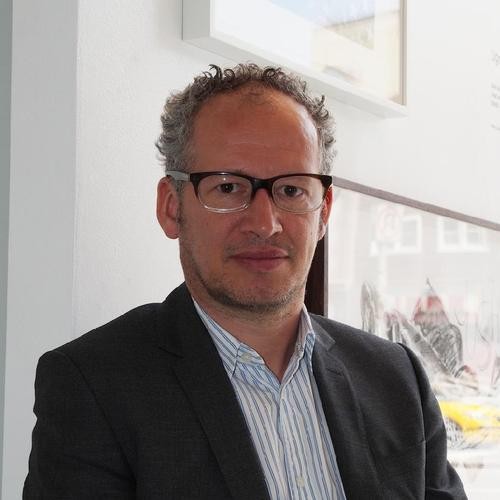Ralph Rugoff, the director of London’s Hayward Gallery, is a far cry from what you would expect of a British museum grandee. A native New Yorker who studied semiotics at Brown University before making his name as an art writer-turned-curator, he views his institution as a way of encouraging audiences to actively—and sometimes physically—engage with the work on the walls, rather than admire it from a cool remove. But then again, the Hayward, a Kunsthalle nested in the lively Southbank Centre performance arena, is not your typical London museum.
Since coming on as director in 2006, Rugoff has distinguished the institution as a cutting-edge alternative venue through shows like “Invisible Art,” a 2012 survey of artworks that you can’t actually see, and "Psycho Buildings," an immersive 2008 exhibition that invited artists to create funhouse-like structures throughout the Hayward. Also, along with showing work by major figures like Tracey Emin and Antony Gormley, he has also given space to lesser-known upstarts—like Jeremy Deller and David Shrigley—who have since risen to international acclaim.
To find out more about Rugoff’s unique approach to curating, Artspace editor-in-chief Andrew M. Goldstein spoke to the Hayward director—who previously ran San Francisco’s Wattis Institute for Contemporary Arts—about his new show of outsider art, and how he takes the bulk of his inspiration from artists.
To begin, how would you describe the Hayward and its mission?
I would say our mission is to do exhibitions that are adventurous on some level, and to bring shows to London—and Europe—that haven’t been looked at carefully enough. But we also try to highlight the fact that it’s really the viewer who contributes half of the meaning of any work of art, and to make sure that people who come and see the shows have a clear sense of their role in engaging with artworks. It’s very easy to put on exhibitions that don’t really mean much, or convey a sense that the audience has a role to play. We do shows that actually put this participatory experience front-and-center.
Could you expand on this idea of the audience contributing to the artwork? What do you mean by that?
Well, Marcel Duchamp, among other people, maintained that while an artist contributes half of the meaning to an artwork, the other half is provided by the audience that is engaged with the work—their experience provides another dimension to the art’s content. And there are many ways that you can make people feel involved, whether by having them actually physically interact with the work or simply through how you address them in your interpretive texts. We create a sense that an exhibition is a conversation, and that people who come to it feel included in that conversation—rather than presenting an argument that’s already completed, where all the viewer has to do is witness it.
What kind of response do you hope to elicit from the viewer through this approach? What do you want a visitor to the Hayward to walk away with?
I’d like them to feel that they just joined a larger dialogue, one that made them look at things a little differently than they normally would. I think the most important thing, really, is for someone to leave an exhibition experiencing the world around them in a new way, not just thinking about what they saw in the museum. The gallery is a perception-altering device—if that doesn’t happen, something’s wrong, and it’s not a successful exhibition.
You have said that you are drawn to artworks that "reflect the times in which we live." Can you expand on that? In what ways does art accomplish that?
I think that most great artists are not just making art about other art and art history—they’re making art about their own experience of contemporary life in their historical moment. They are responding to feelings that they have and which most of us tend to ignore, and they’re looking at things around them in their environments that, again, most of us tend to ignore.
You've just opened a new show, "The Alternative Guide to the Universe," that surveys the work of outsiders in various fields, from art to engineering. The exhibition comes at a time when Massimiliano Gioni's "Encyclopedic Palace" show at the Venice Biennale is also putting a megawatt spotlight on outsider art. You have long included outsider art in your shows, but why do you think the field is so relevant and compelling at the current moment?
There’s just a huge world of interesting visual culture that exists outside of the very narrow confines of what we call the art world, which is really more like a tiny art territory. I think the art world and the larger world of galleries and museums is only now starting to catch up to this other kind of work. In the case of the show at the Hayward, “The Alternative Guide to the Universe,” it doesn’t just include people who might be considered outsider or self-taught artists, it also includes outsiders in other fields, including self-taught or amateur physicists, inventors, visionary architects, all of whom make work that gives you something intriguing to look at.
That was the criteria for the exhibition, to show work by people who reinvent aspects of our world and produce their ideas and visions in these intriguing visual formats. Many of them don’t consider themselves artists, but the things they produce have qualities that, to me, share the best characteristics of art.
Much has been made about the increasing professionalization of the art world, with artists becoming savvy businesspeople. Is this gravitation toward outsider art in part a reaction to that?
There’s some feeling that, in the last decade, money has come to the center of the discussion about contemporary art. It shades the way we look at contemporary art, and it’s hard to block out the fact that work by a major artist in question is selling for several million dollars at auction—even though it’s got nothing to do with what our experience of the work should be. We’re creatures of culture, and every encounter we have is mediated by all that we know of this world that we live in.
Of course, it’s not like outsider art is something outside of commerce—there’s the Outsider Art Fair, there are outsider art galleries. But it is outside of the kind of media-fueled conversation that constantly discusses art in relation to huge sums of money. There’s obviously a small group of people who have that kind of disposable income, and I think that’s another general reason for this interesting outsider art.
Also, in the 80’s and 90’s, the art world in the West became much more international in scope, and we started catching up with what had been happening in the art scenes from different Latin American countries and Japan, China, and elsewhere in Asia. Now, with outsider art, there’s the idea that we’re catching up with art scenes that may be closer to home, but that were just as off the map of conventional art history as those international artists once were.
Back in 1996, after you published your acclaimed collection of essays Circus Americanus, the Los Angeles Times wrote "Ralph Rugoff has an amazing knack for digging up weird stuff." What gravitates you toward the offbeat, the uncanny, and the overlooked?
Well, a lot of times I’ve taken my lead from artists. Artists have enormous curiosity, and are great at finding interesting things that are off the mainstream radar. Even in writing Circus Americanus, a lot of things I wrote about were things I had heard about from artists. I think that for writers, curators, and anyone who’s interested in broadening their view of culture, artists are a great resource. It’s the same when it comes to outsider art. For “Alternative Guide to the Universe,” we borrowed work from a number of artists. Some artists championed particular figures, or wrote about their work, or curated their work.
Then there are also just some outstanding people from other areas who have championed outsider work. Margaret Wertheim, an Australian science writer who lives in Los Angeles, had curated the work of this one outsider physicist, James Carter, and that was a real inspiration to me. Then in London for the past few years we’ve had the Museum of Everything, which is a kind of an outsider museum featuring the work of outsiders and that also was an inspiration—a place where I was introduced to a number of artists who ended up being in the show.
With this kind of art you kind of walk through certain doors, and you find yourself in a different landscape where you need guides to tell you what you’re seeing. You get passed down the alternative Silk Road, like how Marco Polo adventured into some unknown horizon.
When it comes to the exhibitions you curate, the format can be as imaginative as the art, as in “Invisible Art” and "Psycho Buildings.” Where do you get your curatorial ideas?
It always comes out of seeing something. For “Invisible Art,” I remember seeing Tom Friedman’s Cursed piece, where he hired a witch to put a curse on an empty sphere of airspace over a pedestal. At the time I’d seen a few other invisible works—you know, like Yves Klein’s The Void—and I suddenly thought, “Hmm, how much more is out there?” Suddenly I became interested in covering the whole history.
With “Psycho Buildings,” on the other hand, I was originally interested in the book Martin Kippenberger did by that name with photographs of weird structures in cities, most of them half-finished construction sites or odd buildings that didn’t quite fit into any recognizable template. Then there’s also a book Richard Prince did of photographs of strange tree houses in upstate New York. At one point, I thought the show might be about photographic documentation of these structures, and then I got more interested, once I came to the Hayward, in letting artists transform the great, flexible spaces this gallery has into something that a viewer could experience directly. So you can start out with one idea and end up somewhere very different.
Are there any curators that you consider especially inspirational?
Well, a lot of my favorite shows do tend to be curated by artists. I was really interested in the Cindy Sherman-curated contribution to the Venice Biennale, and then there’s Mike Kelley’s “The Uncanny” show, Jim Shaw’s “Thrift Store Paintings” show… it goes on and on. Here, in London, Mark Wallinger curated a brilliant Hayward touring show for us, and Mark Leckey has just done another one. I think artists generally allow themselves to take liberties in making connections between things that a lot of curators don’t, and they also make these connections in an open, generous fashion.
Do you collect any art yourself?
No, I don’t have the collecting gene unfortunately. I wish I did. I’m usually someone who’s trying to get rid of things rather than collect them.











